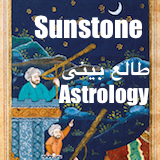The United States' withdrawal from the Joint Comprehensive Plan of Action (JCPOA) under President Donald Trump marked a turning point in Iran’s nuclear trajectory.
By Mohammad Khatibi
Modern Diplomacy
The United States’ withdrawal from the Joint Comprehensive Plan of Action (JCPOA) under President Donald Trump marked a turning point in Iran’s nuclear trajectory. This unilateral decision dismantled the framework that had previously aimed to restrict Iran’s nuclear activities in exchange for sanctions relief. As a result, renewed negotiations on Tehran’s nuclear program have become a necessity.
Despite the U.S. exit, Iran never formally abandoned the agreement. It continued diplomatic engagement with the European Union, Russia, and China, exploring ways to sustain the deal without American participation. However, these efforts ultimately failed to provide Iran with meaningful economic relief, leaving Tehran in a position where compliance no longer offered tangible benefits. In response, Iran gradually escalated uranium enrichment, increasing purity levels to a point where experts say its nuclear capabilities could—if pursued—be sufficient for multiple warheads.
Tehran’s decision to increase uranium enrichment was not an isolated act of defiance. It was a direct consequence of the re-imposition of U.S. sanctions, which deprived Iran of the economic benefits it had been promised under the JCPOA. Without incentives to remain bound by the agreement’s restrictions, Tehran expanded its nuclear activities while maintaining strict monitoring protocols and remaining a signatory to the Nuclear Non-Proliferation Treaty (NPT).
Tehran has consistently maintained that it does not seek a nuclear weapon. Several key reasons underscore this stance:
1. Ayatollah Khamenei’s Religious Edict – The Leader has issued a fatwa prohibiting weapons of mass destruction, including nuclear arms.
2. Strategic Considerations – A nuclear arms race in the Middle East could destabilize the region, potentially harming Iran’s long-term security.
3. Geopolitical Leverage – Remaining at the threshold of nuclear capability allows Iran to maintain bargaining power without triggering full-scale military retaliation from global powers.
The geopolitical equation has rapidly shifted since the Israeli onslaught on Gaza began on October 7, 2023. Iran views this war as a turning point—one that has strengthened its adversaries while reinforcing its commitment to the Axis of Resistance. Despite setbacks, Tehran sees an opportunity to rebuild and reorganize its deterrence strategy.
Iran’s support for its regional allies—such as Hezbollah in Lebanon, the Houthis in Yemen, and various Palestinian factions—has remained unwavering despite economic and military pressures. Each ally faces unique challenges, which in turn shape Iran’s approach to defense and influence. However, the core principle remains the same: Iran will not abandon its allies in exchange for temporary sanctions relief or even a permanent one.
This stance reinforces Tehran’s belief that economic strangulation alone will not lead to a change in its behavior or nuclear doctrine. However, should direct threats against Iran itself materialize, the equation could shift dramatically.
If the United States, in partnership with Israel, launches a direct attack on Tehran, Iran’s nuclear doctrine could undergo a fundamental transformation. Tehran has already demonstrated its capability to escalate conflicts through missile strikes—such as Operation True Promise, which showcased its precision military capabilities. But if Iran perceives an existential threat, its nuclear calculations may change entirely.
In such a scenario:
1. Uncharted Regional Retaliation – An escalation of this scale would push the Middle East into unpredictable territory, with global repercussions.
2. Nuclear Weapon Pursuit – If Iran determines that survival requires nuclear deterrence, previously stated reasons for restraint could become irrelevant.
Iran’s approach to preserving the sovereignty and the Islamic revolution is deeply rooted in religious and ideological principles. The late founder of the Islamic Republic, Ayatollah Ruhollah Khomeini, emphasized that preserving the Islamic Republic takes precedence over all individual considerations. He famously stated:
“Preserving the Islamic Republic is more important than preserving one person—even if it is the Imam of the Age—because the Imam of the Age also sacrifices himself for Islam, and all the prophets from the beginning of the world until now fought and sacrificed themselves for the truth and for the religion of God.”
This perspective suggests that Iran’s nuclear doctrine is not rigid. While sanctions and external pressures alone will not force Iran to abandon its nuclear program, a direct existential threat could fundamentally alter its stance.
Iran’s nuclear trajectory remains a complex interplay of geopolitical, economic, and ideological factors. While Tehran has so far resisted the pursuit of nuclear arms, mounting regional instability, military threats, and shifting alliances could ultimately push it toward a new nuclear doctrine. The future will largely depend on whether diplomatic engagement, deterrence strategies, or outright military confrontation shape Iran’s next move.
Mohammad Khatibi is a political analyst, journalist, and Middle East affairs specialist with extensive experience in Iran’s foreign policy, international relations, and geopolitical strategy. He provides expert analysis through television appearances, published articles, and opinion pieces, offering deep insights into the evolving landscape of regional diplomacy, global power dynamics, and economic alliances.










Comments